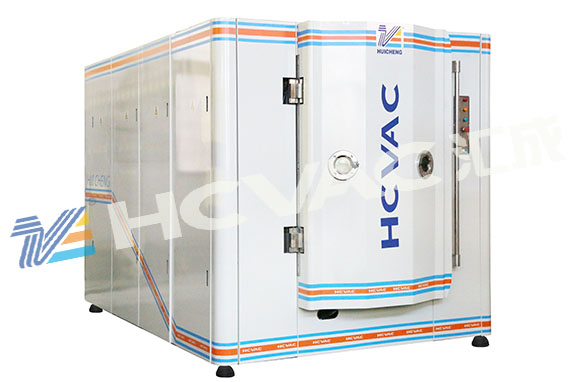There are also many types of ion pvd coating machines, with different application approaches and different types of machines. For example, when applied to stainless steel plates, the ion pvd coating machine for stainless steel plates is used, and when applied to hardware decorative accessories, the ion vacuum coating machine for hardware decoration is used, and when applied to the ceramic industry, the vacuum ion coating machine for ceramic coating is used. Although there are many types of ion coating machines, the application characteristics of ion pvd coating machines are almost the same. The following is a summary of the application characteristics of ion pvd coating machines

1. In ordinary vacuum coating, the evaporating material particles only evaporate to the workpiece surface at the energy of about one electron volt. Between the workpiece surface and the coating, the diffusion depth of the formed interface is usually only a few hundred angstroms (10000 angstroms=1 micron=0.0001cm). That is, it is smaller than one percent of a hair. It can be said that there is almost no connecting transition layer between the two, as if they were completely separated. In ion plating, the evaporated material particles have kinetic energy of 3000 to 5000 electron volts after ionization. If the particles of ordinary vacuum coating are equivalent to a panting long-distance runner, the particles of ion plating are like passengers riding a high-speed rocket. When they bombard the workpiece at a high speed, they not only deposit fast, but also penetrate the surface of the workpiece to form a diffusion layer that is deeply injected into the substrate. The interface diffusion depth of ion plating can reach 4-5 microns, that is, dozens of times deeper than the diffusion depth of ordinary vacuum coating, Even hundreds of times, so they adhere to each other very firmly. The tensile test of the sample after ion plating shows that the coating still extends plastically with the base metal until it is about to break, and there is no peeling or peeling phenomenon.
2. The ability of winding plating is strong. During ion plating, the evaporated material particles move along the direction of the power line in the form of charged ions in the electric field. As a result, good coatings can be obtained at all positions where there is an electric field, which is much better than that of ordinary vacuum coatings, which can only obtain coatings in the direct direction. Therefore, this method is very suitable for inner holes, grooves and narrow slots on plated parts. The ordinary vacuum coating can only be used to coat the direct surface, and the particles of evaporation material are just like climbing a ladder; Ion plating can evenly wrap around the back and inner hole of the part, and charged ions can fly to any place within its radius along the specified route just like a helicopter.
3. The coating of good quality ion plating has dense structure, no pinholes, no bubbles, and even thickness. Even the edges and grooves can be uniformly plated, so as not to form metal tumors. Parts such as threads can also be plated. Because this process method can also repair defects such as micro cracks and pits on the surface of the workpiece, it can effectively improve the surface quality and physical and mechanical properties of the plated parts. The fatigue test shows that if properly treated, the fatigue life of the workpiece can be 2% to 30% higher than that before plating
Ion
pvd coating machine has been applied to all walks of life. With the development of the times, ion coating technology has been continuously optimized and innovated, keeping pace with the times.



